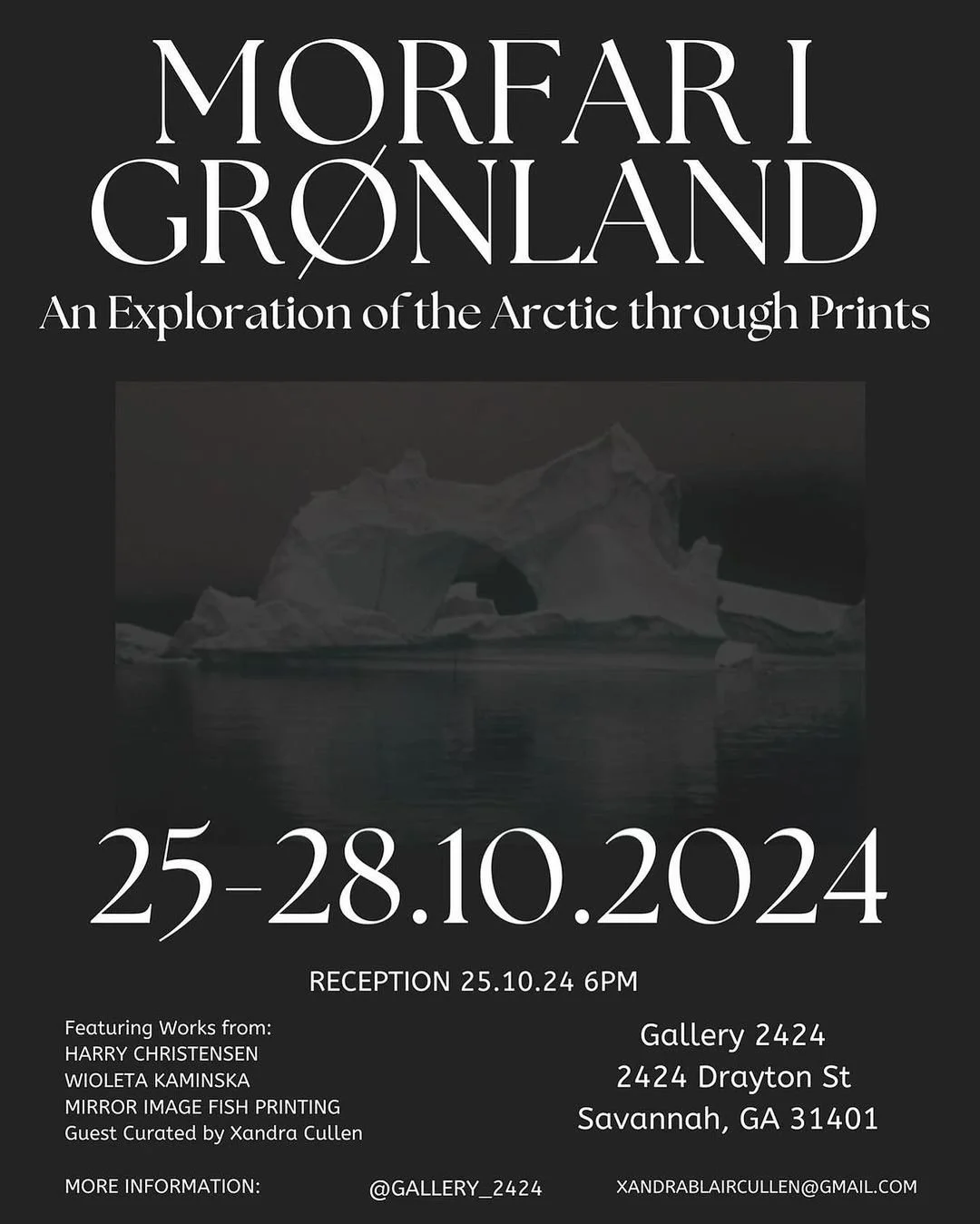Morfar i Grønland
Morfar i Grønland (a Danish translation of “Grandfather in Greenland”) showcases life in the Arctic Circle and what it means to live at the edge of the world through the linocut prints of Harry Christensen (1942-2010). Christensen resided with his wife and two young children in remote towns throughout Greenland in the 1970s including Kap Tobin (now Uunartoq) from 1968-1972, Dundas/Thule Air Base (now Pituffik Space Base) from 1972-1977, and Nanortalik from 1977-1979. Though kept busy as a schoolteacher, Christensen managed to capture his family’s life in Greenland through several art and craft mediums, including painting, pottery, and jewelry. Linocuts, however, were a particular favorite of Christensen’s, being a more affordable and transportable form of artwork to and from Greenland to Denmark. After his passing, his daughter Suzanne moved many of his linocut prints to the United States.
Curated by Xandra Cullen, Christensen’s granddaughter, the exhibit shares never-before-seen work and descriptions of the scenes by the artist’s daughter. The exhibit additionally features contemporary works from Savannah-based artist Wioleta Kaminska and Mirror Image Fish Printing by Tybee Island artist and gallerist Kaylee Hettenbaugh. Kaminska’s art depicts glaciers in Iceland. Speaking to other forms of printmaking, Hettenbaugh utilizes a style called gyotaku (or fish printing), a traditional Japanese method of capturing the size and details of a fisherman’s daily catch. Morfar i Grønland highlights the evocative nature of printmaking and ultimately invites you to explore the remote parts of the world often unseen.
